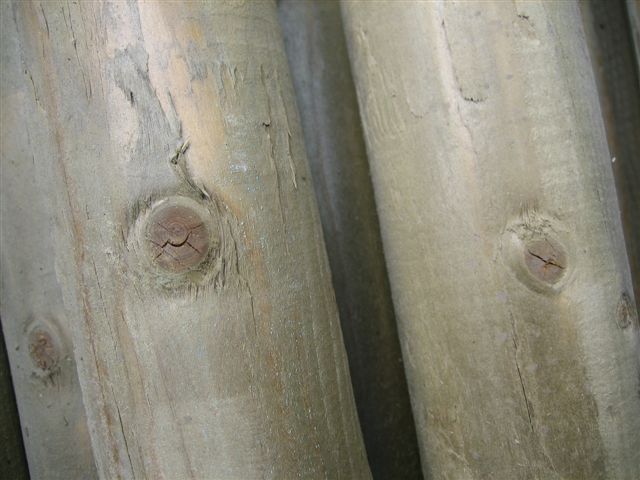Cracking - wood is a natural material that reacts to moisture fluctuations by expansion and contraction. Heartwood and sapwood expand differently, creating stresses in the wood, which can lead to cracks in the wood surface. Although cracks may appear problematic visually, it does not affect the strength of the milled wood. Cracking is characteristic to roundwood and is not acceptable for claims.

Wood properties
Wood properties
Each piece of wood is unique, with its own knots, cracks and variations in color. Because wood is a natural (organic) material, the appearance of wood products changes over time as it responds to changes in the environment. Below are given most common properties that are typical to round milled wood.
Discoloration - The density of the wood varies depending on the place of growth, which is why wood preservatives penetrate differently and there may be some differences in the color of the impregnated products. In outdoor conditions, under the influence of UV, the color of impregnated pole turns gray, over time. This does not mean that the wood preservative has lost its effect, the cells of the sapwood are still treated with an impregnating chemical.

Knots - the number and size of knots vary depending on the type of tree and the sorting of the material. In dry conditions, it is possible for the knot to fall out, which does not affect the strength of the wood.
.jpg)
Heartwood - Heartwood is more resistant to wood fungi and bugs than sapwood because it does not contain nutrients. Up to 100% of the heartwood may be visible on larger poles and the heartwood cannot be impregnated. As heartwood is naturally more durable, it does not affect the life of the products.

Resin - conifers contain resin and resinous spots can occur several months after processing of wood. This is a natural feature of conifer timbers and does not affect the quality of a timber product.
Mould - Mould can occur on both untreated and impregnated products, mainly due to storage in poorly ventilated and/or warm conditions. Mould can be removed with vinegar, hydrogen peroxide or white spirit.
Green spots - The reaction of the copper salts of the impregnating solution with the resin sometimes results in green spots on the surface of the impregnated wood. They do not pose a risk to the user and will disappear over time.








